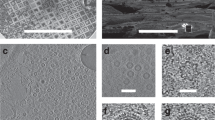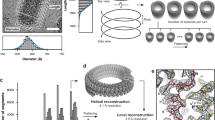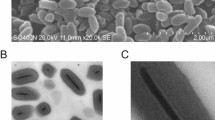Abstract
FOR some time now, Dr. K. M. Smith and I have been studying, in sections for the electron and light microscopes, the role of intranuclear nets which form in insect cells infected with nuclear polyhedral viruses1, and we are accumulating more and more data indicating that the polyhedral and previrus materials may originate in these nets. One of the biggest difficulties has been the lack of adequate cytological techniques for critically recognizing and differentiating the various intranuclear particles, and their relations to each other. Recently, Mazia et al.2 published a new cytochemical method for the study of proteins using bromophenol blue as the dye, and this method, together with appropriate pretreatments of Carnoy-fixed sections, has now been used along with other methods to study the intranuclear cytology of infected cells.
This is a preview of subscription content, access via your institution
Access options
Subscribe to this journal
Receive 51 print issues and online access
$199.00 per year
only $3.90 per issue
Buy this article
- Purchase on Springer Link
- Instant access to full article PDF
Prices may be subject to local taxes which are calculated during checkout
Similar content being viewed by others
References
Smith, Kenneth M., Wyckoff, R. W. G., and Xeros, N., Parasit., 42, 267 (1953).
Mazia, D., Brewer, P. A., and Alfert, M., Biol. Bull., 104, 57 (1953).
Author information
Authors and Affiliations
Rights and permissions
About this article
Cite this article
XEROS, N. Development of Intranuclear Inclusions in Virus-diseased Cells of Lepidopterous Larvæ. Nature 172, 309–310 (1953). https://doi.org/10.1038/172309b0
Issue Date:
DOI: https://doi.org/10.1038/172309b0
This article is cited by
-
Untersuchungen �ber den Verlauf der Granulose bei Raupen von Choristoneura murinana (Hb.) (Lepidopt., Tortricidae)
Archiv f�r die gesamte Virusforschung (1959)
-
Origin of the Virus-Producing Chromatic Mass or Net of the Insect Nuclear Polyhedroses
Nature (1955)
-
Origin and Fate of the Virus Bundles in Nuclear Polyhedroses
Nature (1953)
Comments
By submitting a comment you agree to abide by our Terms and Community Guidelines. If you find something abusive or that does not comply with our terms or guidelines please flag it as inappropriate.



